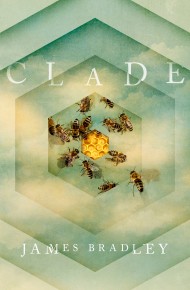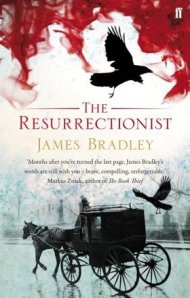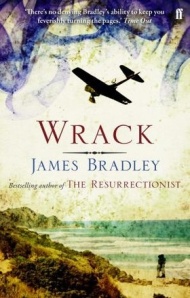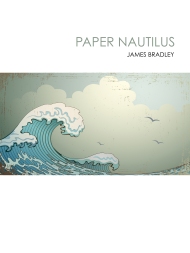The Island in the Mind: Rodney Hall’s Metahistories
 “Beyond the three parts of the World,” wrote Isidore in his Etymologies, some 1400 years ago “there is a fourth part across the interior ocean, unknown to us on account of the heat of the sun, in whose bounds the antipodes are fabulously said to live.”
“Beyond the three parts of the World,” wrote Isidore in his Etymologies, some 1400 years ago “there is a fourth part across the interior ocean, unknown to us on account of the heat of the sun, in whose bounds the antipodes are fabulously said to live.”
Fabulous, unknown, hidden; for more than a thousand years the great southern continent was a blank space into which the European imagination projected itself. Jave la Grande, Terra Australis Incognita, New Holland, Lilliput: it was invented and reinvented over and over again, gradually solidifying as names were inscribed upon it and it was transformed into a place on a map, owned, at first in name alone, but gradually, piece by piece, in fact as well.
The complexities of this process have occupied many Australian fiction writers, in one form or another, for much of the last twenty years. But probably no-one has tackled them on the scale that Rodney Hall has. Through six novels: Terra Incognita, The Lonely Traveller by Night and Lord Hermaphrodite (collected together as The Island in the Mind); The Second Bridegroom, The Grisly Wife and Captivity Captive, (subsequently collected together as A dream more luminous than love); he has woven a fictional tapestry which is at once an imaginary history of the European colonisation of Australia and a history of its imagination, both from within, and without.
Published out of sequence, in collected volumes and in isolation, these six novels have now been joined by a seventh. This latest volume, the improbably titledThe Day We Had Hitler Home, not only brings this great cycle full circle, but brings the cycle itself into focus at last, revealing it in all its improbability and richness.
The Day We Had Hitler Home begins in that same small patch of imaginary countryside (itself a fictional rendering of Hall’s real home, near Bermagui, on the southern coast of NSW) which is criss-crossed and transformed by the working of the invaders’ imaginations in the three novels that made up A dream more luminous than love. World War I has ended, and the locals have gathered at Cuttajo port to meet the returning servicemen. After the half-grotesque, half-farcical ceremony to greet the soldiers (“Izzis a happy time? [Ray asked] Orra sad time?”) have been concluded one more figure appears, ignored by all except the Moloch family, a black-haired man, eyes bandaged, a greatcoat concealing a German uniform. The Molochs do not ignore him because Sybil Moloch claims to recognise him as Dieter Leppert, the son of friends of the family from Munich, obviously arrived to visit them. Only able to communicate through her sister, Audrey, who has learnt what the stranger derisively describes as “Museum German” from a neighbour, Sybil ignores his claim to be not Dieter Leppert but “Adolf Hitler, private first class, of the List Regiment. L. I. S. T., understood? The Sixteenth Bavarian Infantry, Reserve Division.”
But once at home with the Molochs, the stranger’s intransigence over his identity begins to worry even Sybil, and so Audrey and her brother-in-law, Immanuel Moloch decide to use Immanuel’s private plane to fly him north to what has recently ceased to be German Papua, so as to forestall any chance of the family being fingered as German collaborators.
After they return, Audrey, desperate to escape from the suffocating world of her childhood, travels to Munich, where she lives for the next decade and a bit, documenting the rise of the man called Adolf Hitler with her movie camera. Gradually she becomes part of the burgeoning German film industry, eventually falling in love with a Senegalese dissident, Bello, to whom she falls pregnant, just as Hitler’s bid for power begins to gather pace.
Read in isolation, The Day We Had Hitler Home might well seem a slightly baffling, somewhat shapeless novel. Zigzagging from a comic mode reminiscent of Patrick White to a sometimes heavy-handed tone of social and political commentary and back to displays of the sort of almost ostentatiously beautiful writing that Hall is justly famed for, it often seems somehow almost too much its own creature, too self-regarding and caught up in itself, for all its narrative verve and delight in its own inventiveness.
But like the novels which have preceded it, The Day We Had Hitler Home’spleasures are only fully revealed in the context of the whole. Allowed to take its place at the head of the seven, it is transformed. What seemed cryptic becomes richness and complexity, what seemed shapelessness inevitable and elegant.
That this should be the case is at one level unsurprising. One of the most basic pleasures of storytelling on the epic scale is the breadth and depth of the narrative tapestry it permits a writer to weave, and Hall takes full advantage of this. Characters appear and reappear, glimpsed in close-up and from a distance, regarded and self-regarding by turns. Audrey’s stepfather, Immanuel, in The Day We Had Hitler Homeis the failed Christ child born to the narrator of The Grisly Wife, the banker called Godolphin Audrey consults in London is apparently a descendant of the freebooting agents of imperial England who sailed in search of the Island in the Mind in Lord Hermaphrodite; again and again the stories of one novel reflect those of the others, interlacing the seven into one vast web of incident and event.
But as past and present intermingle, something else begins to happen. Held and refracted in the prism of the imagination the connections between the events are seen to be not simple sequences of cause and effect, but more like a kind of flux, in which not just land and time, but memory and consciousness, and the more human confusions of desire and revenge interact and mingle. Refracted thus, the events become less important than the imaginings that sustain them. What is solid becomes impermanent, the fixity of names on maps is dissolved, and the stories that lie beneath the surface are set free. What began as an imaginative history becomes a history of the imagination.
Appropriately therefore, the three novels which constitute The Island in the Mind, the first of Hall’s trilogies are set in the prehistory of colonisation, the space the historian Paul Carter has described as “the haze which preceded clear outlines”. Beginning in the court of an unnamed European kingdom, the first, Terra Incognita turns upon the creation and staging of an opera of the same name by a mysterious composer called Orlande Scarron (in another of Hall’s inversions of fact and fiction, Scarron is quoted in the epigraph to The Day We Had Hitler Home, declaring, with sly reflexiveness, “That this tale is entirely imagined is its best chance of tapping the truth.”).
In this unnamed court the half-imagined southern continent is a refrain heard often in the background of the negotiations surrounding the arrival of Louis XIV, in whose honour the opera is being composed:
“Nobody doubted there was an undiscovered land out there at the edge of the farthest ocean. People constantly speculated about what would happen the day some sea captain chanced back to that shore, visited many years ago by the Portuguese but never found again,”
The land described in the opera is a place where the savage speaks philosophy (and, “like an airy spirit, light in space, mingles there with his ancestors”); where “flowers flower from crusted salt, and diamonds evaporate like dew”. There are times when the place Scarron is creating – and Hall’s vision of the creation and staging of a baroque opera is breathtaking – seems to recall Prospero’s island, from the storm which envelops the travellers who approach it to the spirits which inhabit it. That Scarron should sometimes seem half-Prospero is apt, given The Tempest’sanxieties about language and empire, anxieties which prefigure the concerns of the second trilogy, and The Second Bridegroomin particular.
But the world Scarron creates is no mere fantasy. There is, as the smug, scheming narrator realises, something else to it, something closer to half-remembered dream than mere fantasy, a quality which bewitches and enthrals.

Rodney Hall. Photo by Ross Bird
This capacity of the southern continent to infect the imagination is made more explicit in the second novel in the trilogy, The Lonely Traveller by Night. In this second novel, by far the shortest of the seven, a young Venetian woman is granted a dream of the home of an Aboriginal man captured by her father, a dealer in human curiosities.
But it is not until the third novel in the trilogy, Lord Hermaphrodite, that this process is made given its fullest realisation, as a young entrepreneur and explorer (or pirate and thief, depending on your perspective) finds himself embarking on a journey to find the southern continent with the renowned pirate whose name gives the novel its title, a journey into a place which is at once real and imaginary, the island in the mind.
This process of imaginative colonisation is resumed, or continued in the second of Hall’s trilogies, A dream more luminous than love. Geographically more confined than the novels which bookend them, this central trilogy of novels are set almost exclusively around Hall’s imaginary Yandilli, moving in time from the 1830s to 1898. The first, The Second Bridegroom, is narrated by a short-sighted convict who escapes his captors to find a new life amongst the Aborigines. The second, The Grisly Wife, which won the Miles Franklin Award in 1993, is narrated by a member of a peculiarly nineteenth century religious community called The Household of Hidden Stars. The Household, exclusively female except for their miracle-working leader, and all maimed in some way (missing legs, missing breast, missing toes) have travelled to New South Wales to set up their community in isolation and await the fulfilment of their leader’s prophecies. The third (in fact the first of the seven to have been published) Captivity Captive, is a fictionalised account of the Gatton murders.
Of the three, the first, The Second Bridegroom, is to my mind the most interesting. At its centre lies one of the most powerful and persistent of Australian archetypes, that of William Buckley, the white man who is adopted by the aborigines. Like David Malouf’s Remembering Babylon, a book it resembles in a number of ways, The Second Bridegroomtakes the Buckley story and uses it as a way to try and explore the usually opposed notions of civilisation and savagery, order and chaos, words and things. The William Buckley figure in The Second Bridegroomis not a boy, as it is in Malouf’s novel, but a convict, a short-sighted forger, who is accepted as some sort of ritual figure by his rescuers. Yet even after months amongst them he cannot speak their tongue, and does not understand their culture enough to grasp what it is that causes them to hold him in reverence.
What he does grasp though is the terrible power of words, and of their relationship to empire (the convict is a Manxman, and well-versed in the mechanisms of colonisation). Through his uncertain eyes the imposed patterns of European settlement are revealed creations of an alien imagination:
“Then we came to a fence. Imagine it. The fence baffled me as if I had never seen one before. Most likely I cried out. The Men would certainly have no name for this thing so I gave it the name I had brought with me. Fence. But what would happen now that the world of dreams – where fences belonged – began to trespass on the existing world?”
Caught as he is between two worlds, the convict begins to glimpse the way an alien imagination intrudes into the landscape. This intrusion is partly physical: seen from the outside the cleared land seems more like a scar than anything. This unease with the physical effects of European settlement persists into The Day We Had Hitler Home, where the Molochs drive through “the last patch of forest to survive Immanuel’s saw-log operations”). But it is also, as the passage above suggests, a kind of psychic violence, the intruding imagination remaking the landscape in its own image, eradicating other understandings as it goes.
In Lord Hermaphrodite the English narrator visits a treasure trove of maps held in Gombroon, where he and his companions are shown maps not just of the world, but of Art, of “the nations of the world and their weaknesses”, and of Reason and Madness. (These latter maps may seem bizarre to a modern mind, but their oddness should direct us to the socially determined nature of such objects, and to the complex relationship between the way we think about things and the way things “are”). Amongst the maps they are shown are one which bears a thick vertical line, bisecting the southern American continent. The keeper of the maps is ignorant of the line’s nature, but one of the Godolphins is not, and explains to the keeper that it is the Pope’s Line, made by the Treaty of Tordesillas; “On one side Spanish territory and on the other Portuguese”.
As an emblem of the workings of the imperial mind, the Treaty of Tordesillas is pretty much unrivalled. A line which divides the world in two, declaring one half one nation’s the other another’s, it illustrates a kind of blindness to the places it depicts, a deafness to their uniqueness. Seen through this prism, the clearing and remaking of the land described in The Second Bridegroombecomes, not surprisingly, an erasure. The land is emptied, wiped clean, and across it is written a new world, a new understanding of the place.
But made aware of the way his rescuers (or are they his captors? Hall’s work delights in the ambiguity of this sort of duality) view the land, and albeit dimly, of their way of living in it and with it, the convict narrator of The Second Bridegroomrealises the works of the colonisers from which he has fled, their fields and buildings, are somehow unreal, forgeries which mimic another place and another imagination.
Of course this sense of displacement, of being strangers in a strange land touches upon one of the deepest anxieties of the Australian imagination. We have always been, and to some extent remain, a settler culture, set down in a place as alien to the ideas and technologies that sustain our society as we are to it. Neither new Eden, as the Household of Hidden Stars hope it will be, nor the little England the settlers are seeking to build, the land rejects us (as the narrator of The Grisly Wifedeclares, the bush “didn’t like the smell of us”).
But the problem is not the land, but us. By refusing to hear the language and the landscape of the settled land we make ourselves alien, our imagination remains troubled and captive to its own delusions of conquest. And, as the place that succoured the invading imagination grows more distant, as it does across the course of the three novels in A dream more luminous than love, the colonial mind grows more troubled, more alone, a process that plays out to tragic effect in the trilogy’s final volume, Captivity Captive.
The Day We Had Hitler Homeis dedicated to Paul Keating, “for the magnificent achievement of his Native Title Act”, and, for all its preoccupation with Germany, as its dedication would suggest, its real dramas seem to be at home, in its backyard, so to speak. In the closure of a huge narrative circle, Europe is no longer home for the Australian narrator, but a new Terra Incognita (the title Audrey chooses for her film) a place wracked by the same delusions of power and driven by the same greed that drove the expansion that began the processes explored in The Island in the Mind. These similarities seem most visible in the world of stars and directors which Audrey briefly inhabits in Munich, which might quite easily be the court described in Terra Incognita, just as the films they produce, lavish epics of empire and decay like Der Krönung des Kaisers Nero, seem not only to represent these similarities, but echo Scarron’s creation of the opera in that first novel.
The inversions and metonymies of this reversal are almost limitless, multiplying and refracting themselves over and over, but they seem somehow less important than the simple discoveries Audrey makes upon her return. As so often is the case, we have to leave in order to see what was in front of our faces all the while. In Audrey’s case this is a series of questions, none less painful than that posed by the aboriginal people who live upon the fringes of her vision:
“I accept something I never understood until today. That this land, the entire continent, once belonged to Etty’s people. We pushed them off it and just about wiped them out, we British. . . . The legacy is visible here in this camp of fugitives, living where they have belonged since before the pyramids were built. Imagine that: fugitives who belong. So strange. . . . We are observed. We ought not to have come.”
Until now the aboriginal people have remained apart from Hall’s great cycle, glimpsed only on its fringes, barely speaking, more ghosts than anything. Yet here, at its end, they are brought centre stage at last, and the central dilemma of the alien imagination is made painfully clear. This was not an empty place, it was not a blank space, and for all that the settlers feel alien, there are others who have been made alien in their own land.
After the richness and improbability of all that has preceded it, this simple realisation is stark, and the more painful for it. Yet it comes with its own dream of transformation. For in the curved space of Hall’s great creation, past and future, the imaginary and the real fold into each other, forming a mirrored hall of implication and possibility, a place where causation is complex and multi-dimensional. Like an Escher painting, in such a place an understanding of our origins is simultaneously a dream of our future, a paradox which recalls the Lord Hermaphrodite’s dreams of unity in opposites, and reminds us that the future is as unfixed as the past.
Originally published in The Australian’s Review of Books, 11 October 2000.








